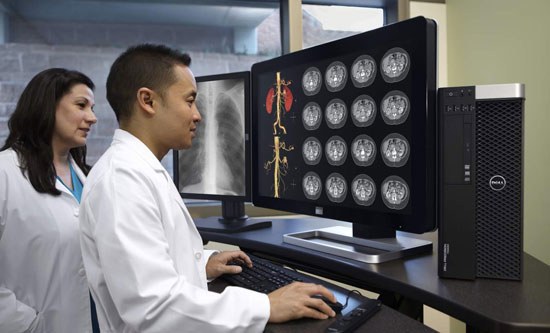As I sat down in my home office to work on this blog, my wife stuck her head around the door to see what I was up to. She and I met in x-ray school 44 years ago, so RSNA and imaging technology are as interesting to her as they are to me.
We talked about past meetings and laughed about how excited we all were back in the day when the hot topic was moving from 100 speed x-ray film to 400 speed film, which allowed us to use far less radiation. Technologies that were a big deal back then seem almost crude by today’s standards.
One of the things I love best about the annual trek to Chicago for RSNA is the chance to see how far our industry has come and how, every year, there is something new that helps us do a better job for our customers and their patients.
As we talked, I realized that the hot topic at RSNA this year won’t be just about new technologies to capture images. Instead, this year’s focus will also be on improvements in the way we share the images and how much more value we can bring to patient care with this new technology.
In the “old days,” film images were great diagnostic tools, but they were lousy communication tools. New informatics technology is giving us what the industry has long needed — highly effective communication tools.
I think the guys who helped found organizations like the Society for Imaging Informatics in Medicine (SIIM) would be excited about the technology that we’ll see at RSNA this year. The world they envisioned, where images could be shared in real time and true clinical collaboration could occur, is now real. Medical images are no longer bound to the site where they were created. Instead of technologies that required the diagnostician to come to a certain location to view a patient’s images, we now have the ability to share those images anywhere, anytime in a cost effective manner.
That means that the radiologist and the referring physician can be hundreds of miles apart and still view the same image together in real time and talk in-depth about the results. In fact, the referring physician (and any other member of the healthcare team) can see the images almost as quickly as the radiologist. That speed means faster times to diagnosis, which means the patient can begin treatment sooner and spend less time in the hospital.
Just as important as faster results is the wealth of information that can be integrated with the image files, information that is critical to individual patients and to all of us who use the healthcare system. For example, we can integrate the image with the patient’s electronic medical record (EMR) and also tell the healthcare team the patient’s radiation dose from the study. We can use data mining and analytics to find insights as to how other patients with similar results fared with their treatments.
Technology that I could only dream about early in my career is now available to everyone, and at an affordable cost. While the imaging advances of past years have been exciting, the technology advances this year will focus not on just the images but on the patient the image represents. We are set to make medical imaging even more valuable than it has always been and extend that value to healthcare providers both large and small.
At Dell, we maintain the largest medical image archive in the world, with more than 8 billion images currently, and thousands being added every day. If you’d like to see how fast the archive is growing, check out our Ticker. We’ve also moved way beyond vendor-neutral archiving to a larger capability that sets the stage for true data integration across all of healthcare.
If you want to see what the future holds, stop by Booth #7913 –North Building, Hall B, at RSNA. I’ll be at the show, and I or one of my colleagues will be glad to give you a demonstration of all that our Unified Clinical Archive can make happen.
See you in in Chicago!
